Creating the Texas Coast Ecosystem Health Report Card
Heath Kelsey ·Jamie Currie and I had an exciting meeting with experts on Texas coastal water quality, birds, seagrass, oysters, and fisheries on November 1 and 2 to create the first Texas Coast Ecosystem Health Report Card. We met at the Harte Research Institute for Gulf of Mexico Studies in Corpus Christi, Texas, which was a great venue for the meeting. This project is the culmination of several years’ work, starting with "A Vision for the Gulf of Mexico Report Card" , which Bill Dennison, Jane Thomas, and I helped produce in 2013, and which continued in 2017 and 2018 with the Gulf Coast EcoHealth Metrics project that we did in partnership with Mark Harwell and Jack Gentile. This report card project builds on that work to create a comprehensive representation of ecosystem health for the coastal ecosystems of Texas. It’s really fun to help this come to fruition after so much work!
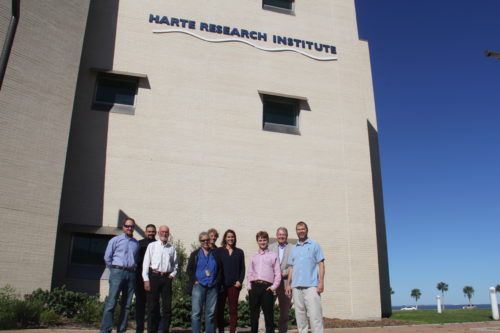
Most of the Texas coast is a long lagoon behind barrier islands, and a series of embayments often formed where rivers enter the lagoon. The effect of precipitation and freshwater input drives the majority of the ecosystem dynamics, with lower salinity in the upper coast and higher in the South, following a gradient of precipitation and riverine inputs. The relatively low freshwater input to the southern portion of the coast (Laguna Madre) and few inlets to the Gulf of Mexico, coupled with high evaporation create a hyper saline environment, with salinities sometimes approaching 50-60 Practical Salinity Units (psu; Olsen, 2104). This salinity gradient drives other ecosystem components: seagrasses like Halodule and Thalassia dominate the Laguna Madre, which provide optimal fish nursery habitat and food for overwintering waterfowl. Wading birds prefer the large mudflats that occur throughout lagoons. Oysters on the other hand prefer the more moderate salinities in the middle and upper coastal regions.
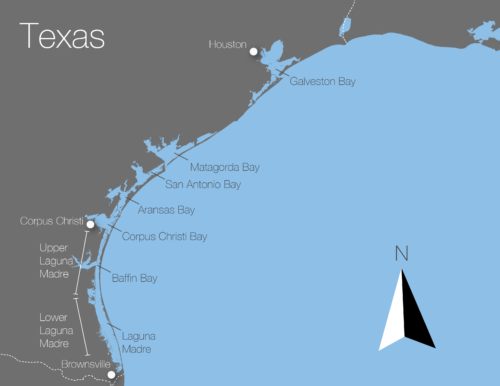
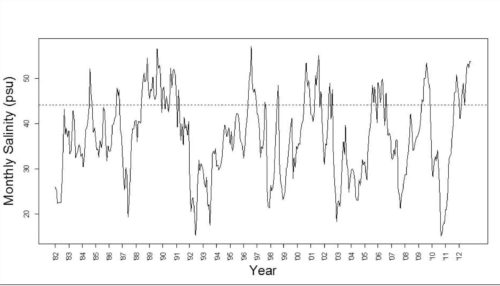
Freshwater input to the lagoons is also reduced by dams constructed in major rivers to create reservoirs for urban areas with high water demand, like Houston, Galveston, and Corpus Christi. Urban areas also create storm water runoff and effluent from wastewater treatment facilities, which can be high in nutrients and fecal bacteria. In other, more agricultural areas like Baffin Bay, storm water runoff also can be high in nutrients and sediments from farm fields.
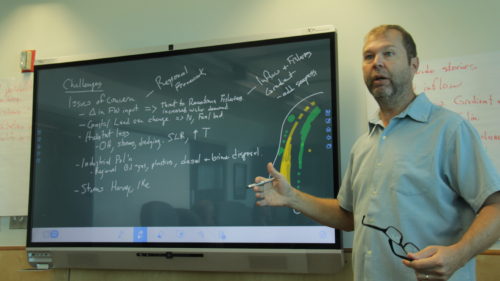
Overlying the story of ecosystem condition on the Texas Coast is natural variation in temperature, precipitation, and storms. This high variability seems to have created a fairly resilient system: dramatic annual variations in salinity can cause dramatic changes in water quality, oyster abundance, seagrass distribution, and even fish health, but these effects are normally relatively short-lived. However, human impacts to the land and rivers, coupled with rising sea levels, higher temperatures, and increased storm frequency and severity may be increasing the frequency and severity of these normal, natural water quality variations. The ability of aquatic resources to remain resilient in the face of these changes remains to be seen.
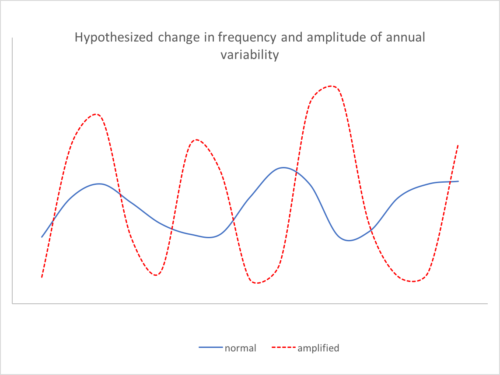
Our meeting was only about 9 or 10 hours in total, but we were efficient and very productive. We designed the report card as a 6-page tri-fold, and the supporting report (which we are calling “The Expanded Edition”). We identified a common regionalization scheme for all of the indicators, identified the major stories that were relevant to the ecosystem condition of the Texas Coast, and reviewed data analysis methods for each indicator. Our job was made easier by the great work that our partners have already done in support of this project, and by the wonderful hosting at HRI. We had a great meeting room, complete with an electronic whiteboard (that unfortunately deletes all illustrations after an hour of idle time, say, over lunch - boo!), cool windows that become opaque at the flip of a switch, and a super high-quality screen at the head of the table. Breakfast and lunch were catered, to allow us to keep forging ahead, and dinner was provided at a very posh location in downtown Corpus Christi. Gail Sutton, Barbara Howard, and Larry McKinney all provided great hospitality and support for the meeting objectives. We couldn’t ask for better hosts.

Although I had a limited opportunity to get out and about, I did manage to go for a short birding trip with Jamie and Chris Onuf, to a local wildlife area called the Hans and Pat Suter Wildlife Refuge. We saw oystercatchers, pelicans, kingfishers, herons, and, in the distance, Roseate Spoonbills. It is great to know that such a variety of wildlife exists in such close proximity to large urban areas like Corpus Christi. The water was full of life everywhere we could see it - fish were jumping, birds were flocking, and people were out enjoying it. Jamie had the added opportunity of an extra day to wander and take photos of the landscape, wildlife, activities, and stresses on the coastal ecosystem. Although my time was more limited, I really enjoyed it. It was a great way to kick of this report card - we are looking forward to having it completed in early 2019!
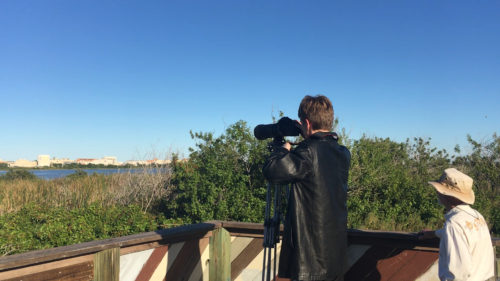
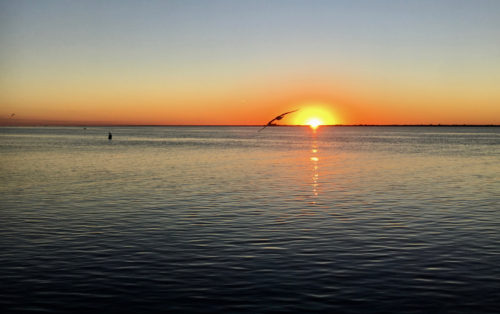
References:
Olsen, Z. 2014. Potential Impacts of extreme salinity and surface temperature events on population dynamics of Black Drum, Pogonias cromis, in the Upper Laguna Madre, Texas. Gulf of Mexico Science 2014 (1-2):60-68.
About the author
Heath Kelsey

Heath Kelsey has been with IAN since 2009, as a Science Integrator, Program Manager, and as Director since 2019. His work focuses on helping communities become more engaged in socio-environmental decision making. He has over 15-years of experience in stakeholder engagement, environmental and public health assessment, indicator development, and science communication. He has led numerous ecosystem health and socio-environmental health report card projects globally, in Australia, India, the South Pacific, Africa, and throughout the US. Dr. Kelsey received his MSPH (2000) and PhD (2006) from The University of South Carolina Arnold School of Public Health. He is a graduate of St Mary’s College of Maryland (1988), and was a Peace Corps Volunteer in Papua New Guinea from 1995-1998.

